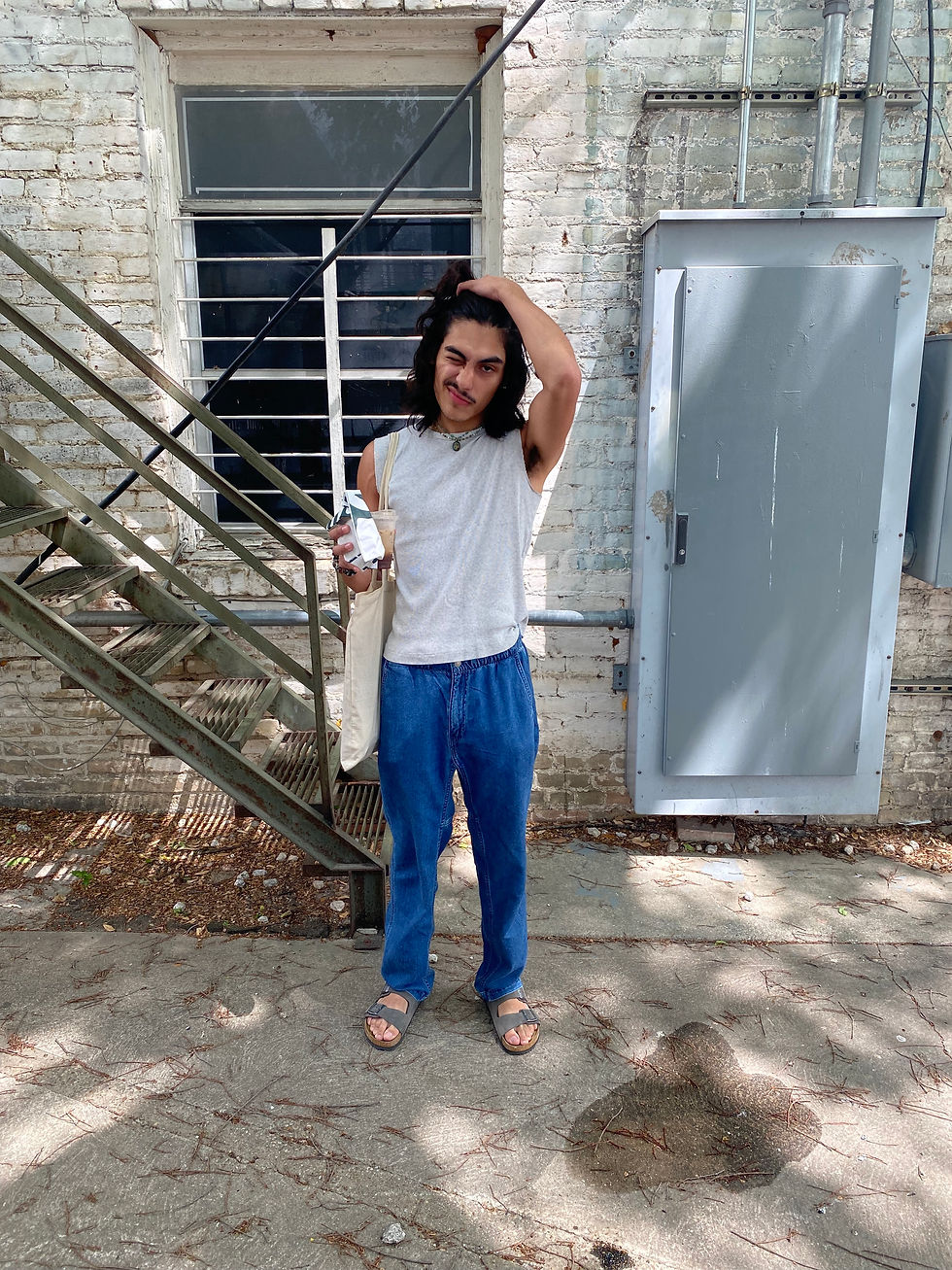Art in Austin is Returning, Slowly but Surely
- Clay Standridge

- Oct 4, 2022
- 4 min read
Written in May, 2021
by Clay Standridge
The glass double doors of the Blanton Museum of Art open to the front desk where a masked employee stares at a computer screen. Past the front desk, through the foyer, lies the massive main room. White and blue tiles climb up its walls to an immense, skeleton-like sculpture hanging from the ceiling. Normally, there would be dozens of people staring at it from the ground, but the room is empty.

The buzz of school children, docents, gallery teachers and art appreciators has turned into the shuffles of one or two masked patrons trying to stay socially distant. The whispers of a Francisco Matto and the screams of a Hans Hofmann sit in silence.
The Blanton, which once hosted hundreds of people a day, now sees only a few dozen visitors a week. The COVID-19 pandemic shut the museum down from March until August 2020, and, although the museum is now open and attendance is on the rise, the effects of the pandemic still linger.
“I miss the informal aspects of being in an office. Talking to your coworkers, seeing people in person, going to the mailroom and seeing art,” says Christian Wurst, a curatorial assistant at The Blanton, who has been working remotely since March 2020. “It’s difficult to have a job where you basically talk about art and look at that art and you essentially are cut off from all the art for most of the time.”
Working with art is intrinsically hands-on. Even the magic of just viewing the art is lost when it can’t be in person. Anyone can see a picture of the Mona Lisa on Google Images, but there is a reason why people line up at the Louvre just to get a peek. So, when a person's job is dependent upon being physically with the art, and being able to see details, their job becomes much harder when they can’t.
The entirety of the art world felt the same repercussions.
“To be told, ‘you have to go home now, take your stuff from your desk and we’ll see what we can do remotely’ was really scary,” says Rachel Daley, the Senior Auction Coordinator at Santa Fe Art Auction. “I wasn’t doing my job fully and effectively because I wasn’t physically there with the art.”
While being with the art is a massive part of the job for some museum employees, the exhibition schedule is something that involves the entire administrative staff. So, when a special exhibition of Latin American art at the Blanton was forced to close less than a month after its opening in February 2020, the museum was left wondering what to do.
Although many of the works put on display were a part of the Blanton’s extensive private collection, there were also works on loan from Peru, Argentina and Mexico. Not only was the exhibition schedule thrown out the window, but all these works were stuck in an empty gallery, doomed to sit unseen for months then shipped back to their respective countries.
When the marketing and communications staff at the Blanton realized there was no timeline for their reopening, they began to find ways for people to safely view the art. They started creating an online multimedia experience, complete with an audio guide and 360° camera tour, trying to replicate what it felt like to walk through the halls of the museum.
With the team hard at work developing digital experiences and trying to make a positive from a very negative situation, the museum staff noticed an unexpected upside of the shutdown. Because of the domino effect the pandemic caused, throwing off the schedule of hundreds of museums and travelling exhibitions worldwide, the Blanton was forced to dig into their own archive of over 19,000 works.
“Our curators and our collections team started working on creating new exhibitions to take the place of these travelling exhibitions but creating them out of our own collection,” says Carlotta Stankiewicz, the Director of Marketing and Communications at the Blanton. “It actually has been a good thing because I think, as a result of that, our curators are always challenged to come up with new ways to present the work in our collection and to find works that haven’t been displayed before.”
In September 2021, the Blanton is opening an exhibition called “Without Limits: Helen Frankenthaler, Abstraction, and the Language of Print,” which is composed completely of works pulled from the Blanton’s archive. The exhibition was organized by Wurst.
Now, the museum has reopened, and as special exhibitions resume and masked visitors begin filing back in, museum staffers extra creative effort is paying off. Attendance is still limited, ticket reservations are mandatory, and masks are still required, but people are once again making connections with the art.
The primary draw of art museums is obviously the art, but there’s also a certain je ne sais quoi, something that you can’t quite put your finger on, that brings you back. That magic is slowly but surely returning.
“It’s not the same, people are wearing masks, staying far away from each other, but you can still have those close relationships with the artwork that you had before,” says Mitch McDavid, the Head of Security at the Blanton. “It’s a little harder to see because we’re staying socially distanced, but you can see the same kind of wonderment and excitement for the shows that you had before.”






Comments